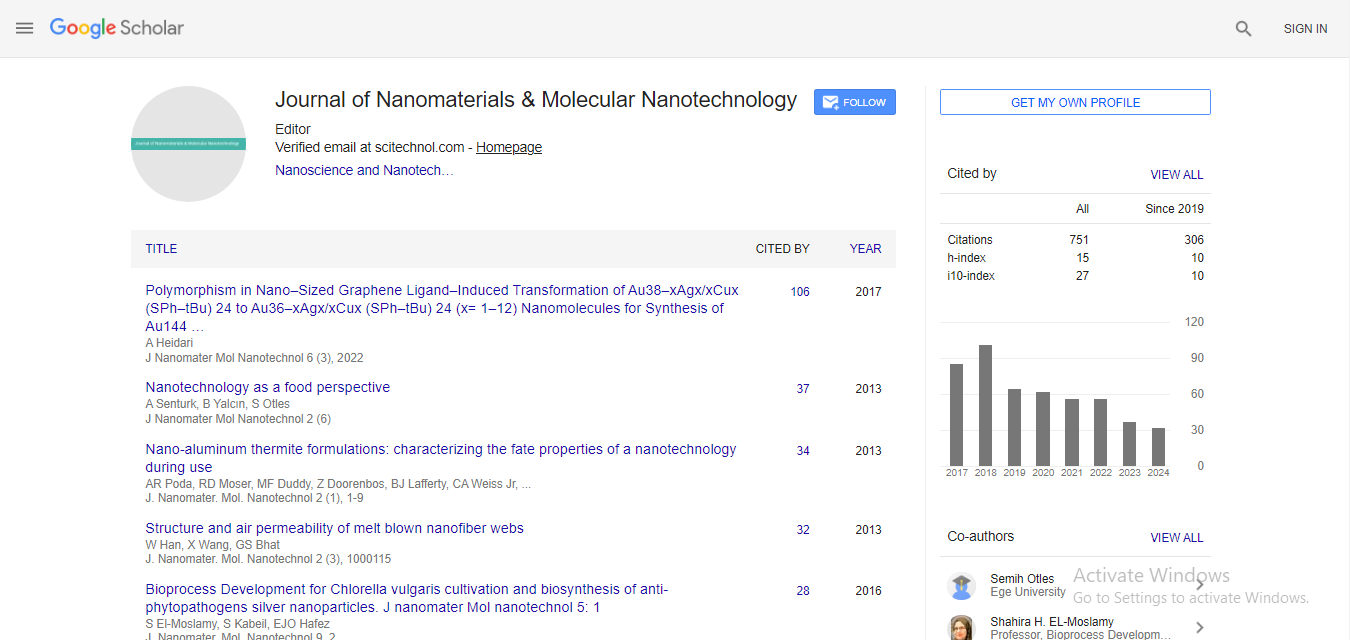Theoretical study of single wall carbon nanotube functionalized with palladium as hydrogen sulfide gas sensor
Reza Kalantarinejad and Sheida Bagherzadeh Nobari
Shezan Company, Iran
Islamic Azad University, Iran
: J Nanomater Mol Nanotechnol
Abstract
Hydrogen sulfide gas is one of the most dangerous gases for humans because it is toxic, flammable and colorless. In addition to its poisonous characteristics it is mandatory to monitor H2S in various industries such as coal mining, oil and gas extraction and petrochemical refining. Current commercial sensors work in high temperature and have disadvantages such as high cost and high power consumption. Therefore, it is necessary to develop a fast and safe method to detect H2S gas in low concentrations with high sensitivity. Field effect gas sensors based on one-dimensional nanostructures have been shown to be a promising candidate for enhanced gas sensing. In this work, the effect of adsorption of H2S gas on electrical properties of single wall carbon nanotube decorated with palladium nano clusters between two gold electrodes is investigated. For this purpose, current at different bias voltages in absence and presence of H2S gas was calculated. Then sensitivity of the device at different bias voltages is computed and compared. We find that the largest sensitivity takes place at bias voltage of 40 mV. In this bias voltage, the projected density of states (PDOS) and transmission (T) of SWCNT functionalized with Pd before and after H2S adsorption are computed and compared accordingly. After adsorption of H2S gas, the PDOS and as a result T decreased significantly in the energy window between ±0.02 eV as a result current decreased significantly from 1.53 μA to 0.89 μA. This reduction is due to the charge transfer from Pd nano clusters and SWCNT to H2S gas that results in reduction of concentration of majority carriers (electrons). The results show that carbon nanotube decorated with palladium nanoclusters can be a promising candidate for fabrication of FET gas sensors. Recent Publications 1. Bagherzadeh-Nobari S, Hosseini-Istadeh K, Kalantarinejad R, Elahi S M and Shokri A A (2018) Computational investigation of single-wall carbon nanotube functionalized with palladium nanoclusters as hydrogen sulfide gas sensor. International Nano Letters 8(1):9-15. 2. Bagherzadeh-Nobari S, Kalantarinejad R, Elahi S M and Sanvito S (2018) Computational investigation of label free detection of biomolecules based on armchair graphene nanoribbon. Sensors and Actuators B: Chemical 255:1276-1284. 3. Kalantari-Nejad R, Bahrami M, Rafii-Tabar H, Rungger I and Sanvito S (2010) Computational modeling of a carbon nanotube-based DNA nano sensor. Nanotechnology 21(44):445501. 4. Khodadadian A, Hosseini K, Manzour-ol-Ajdad A, Hedayati M, Kalantarinejad R and Heitzinger C (2017) Optimal design of nanowire field-effect troponin sensors. Computers in Biology and Medicine 87:46-56. 5. Istadeh K H, Kalantarinejad R, Aghaei M J and Yazdi M R (2013) Computational investigation on H2S adsorption on the cnt channel of conductometric gas sensor. Journal of Computational and Theoretical Nanoscience 10(11):2708-2713.
Biography
Reza Kalantarinejad has graduated BSc and MSc level in Mechanical Engineering from Amirkabir University of Technology, Tehran, Iran. He conducted his PhD dissertation designing a nano biosensor using modern quantum transport approaches. He has several patents and journal papers in the field of nanotechnology and biotech in particular. He is two-time winner of Kharazmi award and has written over seven books and 20 papers in the field of Nano Biotechnology and Converging Technologies i.e., NBIC (nano, bio, info and cogno techs). He is an entrepreneur in the field of converging technologies and is the founder of Shezan and Hamgara companies; in which he along with his team have successfully developed relevant technological solutions.
E-mail: kalantari@shezan.com
 Spanish
Spanish  Chinese
Chinese  Russian
Russian  German
German  French
French  Japanese
Japanese  Portuguese
Portuguese  Hindi
Hindi 



